Wednesday, November 16th 2011

Intel Celebrates 40 Years of the Microprocessor
On this day 40 years ago, Intel Corporation introduced the world's first commercially available microprocessor - the Intel 4004 - triggering the start of the digital revolution. While most people have never seen a microprocessor, devices that contain them have become so integrated into daily life that they have become virtually indispensible.
Microprocessors are the "brains" inside computers, servers, phones, cars, cameras, refrigerators, radios, TVs and many other everyday devices. The proliferation of microprocessors is due in large part to Intel's relentless pursuit of Moore's Law, a forecast for the pace of silicon technology development that states that roughly every 2 years transistor density of semiconductors will double, while increasing functionality and performance and decreasing costs. It has become the basic business model for the semiconductor industry for more than 40 years.For example, compared to the Intel 4004, today's second-generation Intel Core processors are more than 350,000 times the performance and each transistor uses about 5,000 times less energy. In this same time period, the price of a transistor has dropped by a factor of about 50,000.
Future microprocessors developed on Intel's next-generation 22nm manufacturing process are due in systems starting next year and will deliver even more energy-efficient performance as a result of the company's breakthrough 3-D Tri-Gate transistors that make use of a new transistor structure. These novel transistors usher in the next era of Moore's Law and make possible a new generation of innovations across a broad spectrum of devices.
While looking back to see how much things have changed since the microprocessor's introduction, it's astounding to think about the future and how this digital revolution will continue at a rapid pace as microprocessor technology continues to evolve.
"The sheer number of advances in the next 40 years will equal or surpass all of the innovative activity that has taken place over the last 10,000 years of human history," said Justin Rattner, Intel chief technology officer.
Such advances in chip technology are paving the way for an age when computing systems will be aware of what is happening around them, and anticipate people's needs. This capability is poised to fundamentally change the nature of how people interact with and relate to information devices and the services they provide. Future context-aware devices ranging from PCs and smartphones to automobiles and televisions, will be able to advise people and guide them through their day in a manner more like a personal assistant than a traditional computer.
Reflections and Predications: The Impact of the Microprocessor
To celebrate the past 40 years of microprocessor innovation and look ahead at the next 40 years, Intel compiled photos, video interviews, opinion pieces and a number of info graphics and other materials with insight from Intel and industry executives, analysts, futurists and engineers.
Microprocessors are the "brains" inside computers, servers, phones, cars, cameras, refrigerators, radios, TVs and many other everyday devices. The proliferation of microprocessors is due in large part to Intel's relentless pursuit of Moore's Law, a forecast for the pace of silicon technology development that states that roughly every 2 years transistor density of semiconductors will double, while increasing functionality and performance and decreasing costs. It has become the basic business model for the semiconductor industry for more than 40 years.For example, compared to the Intel 4004, today's second-generation Intel Core processors are more than 350,000 times the performance and each transistor uses about 5,000 times less energy. In this same time period, the price of a transistor has dropped by a factor of about 50,000.
Future microprocessors developed on Intel's next-generation 22nm manufacturing process are due in systems starting next year and will deliver even more energy-efficient performance as a result of the company's breakthrough 3-D Tri-Gate transistors that make use of a new transistor structure. These novel transistors usher in the next era of Moore's Law and make possible a new generation of innovations across a broad spectrum of devices.
While looking back to see how much things have changed since the microprocessor's introduction, it's astounding to think about the future and how this digital revolution will continue at a rapid pace as microprocessor technology continues to evolve.
"The sheer number of advances in the next 40 years will equal or surpass all of the innovative activity that has taken place over the last 10,000 years of human history," said Justin Rattner, Intel chief technology officer.
Such advances in chip technology are paving the way for an age when computing systems will be aware of what is happening around them, and anticipate people's needs. This capability is poised to fundamentally change the nature of how people interact with and relate to information devices and the services they provide. Future context-aware devices ranging from PCs and smartphones to automobiles and televisions, will be able to advise people and guide them through their day in a manner more like a personal assistant than a traditional computer.
Reflections and Predications: The Impact of the Microprocessor
To celebrate the past 40 years of microprocessor innovation and look ahead at the next 40 years, Intel compiled photos, video interviews, opinion pieces and a number of info graphics and other materials with insight from Intel and industry executives, analysts, futurists and engineers.
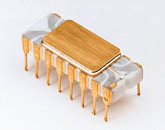
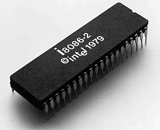
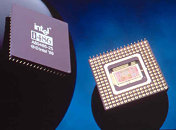
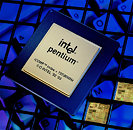
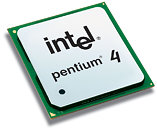
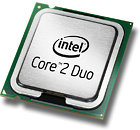
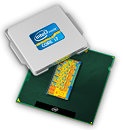
34 Comments on Intel Celebrates 40 Years of the Microprocessor
AND
Intel still thinks you can build a video card off x86
Oh I think we all know what would have happened...;)
(July 18, 1968)
But IBM already had a technology exchange deal with Intel, so they had to use the Intel CPU instead .
IDF 2011: 8-way 1.2Ghz 32-core Knights Ferry running a visually improved ray-traced version of Wolfenstein at 1080.
[YT]XVZDH15TRro#![/YT]
And the new version is just around the corner running between 1.2Ghz - 1.6Ghz with up to 64 cores enabled.
Of course, all of that is the easy part. Can only imagine the fight against those heavily invested in OpenGL/DX.